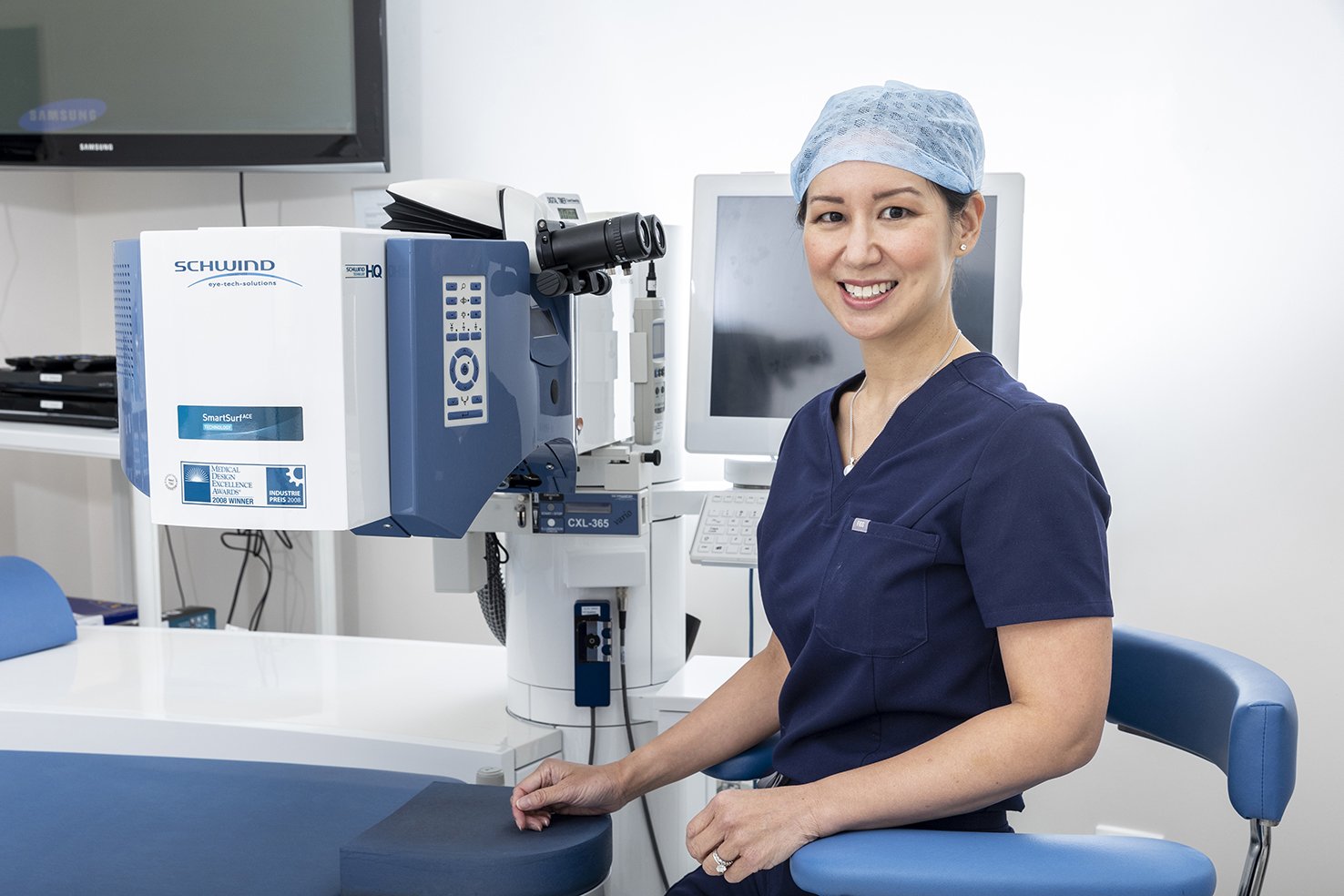
Laser Eye Surgery
Dr Ang performs the latest laser techniques including Smartsight, LASIK and TransPRK to correct refractive error including short-sightedness (myopia) and/or astigmatism.
Experience freedom from glasses and contact lenses
Book your laser surgery assessment call: (08) 9381 0758
Laser eye surgery is a safe and effective procedure to find freedom from glasses and contact lenses. Whether it be for practical, professional, leisure, or sporting reasons, laser eye surgery can offer a new lifestyle choice for you.
Dr Ang is a highly experienced laser surgeon and performs the latest laser techniques including LASIK, Smartsight, and TransPRK. She is a member of the renowned Lions Laser Vision, which is the premier refractive surgery centre in Western Australia. She uses the most advanced lasers including the Schwind Amaris 1050RS excimer laser.
Dr Ang is dedicated to achieving the best possible outcomes for her patients through a personalised approach and state of the art care. She will discuss with you your desired outcomes and assess your suitability for refractive surgery.
There are several types of laser vision correction available, and Dr Ang will discuss with you during your consultation which option is best for you and your eyes. Please click on the links below to read more about them.
“Many of my patients find having laser eye surgery life changing, making a huge difference to their quality of life”
- Dr Andrea Ang
Types of Laser Eye Surgery
-

LASIK
LASIK is the most commonly performed laser vision correction procedure performed worldwide.
-

Smartsight
Smartsight by the Schwind Atos Laser is the latest laser technology to correct refractive error.
-

TransPRK
TransPRK is a no-touch laser vision correction that is non-invasive, safe, and gentle to the eye.
What is refractive error?
The main refractive errors include:
Short-sightedness (myopia)
If the cornea and lens are too strong, or if the eye is too long, light comes into focus in front of the retina. This causes objects in the distance to be blurred but those closer are in focus.
Long-sightedness (hyperopia)
If the cornea and lens are not strong enough, or the eye is too short, light comes into focus behind the retina. This causes objects in the far distance to be blurred and even more so for those close up.
Astigmatism
This occurs when the cornea has different curvatures: it is shaped more like an AFL football rather than a soccer ball. This makes focusing uneven or distorted, and objects are blurry in the distance or up close.


